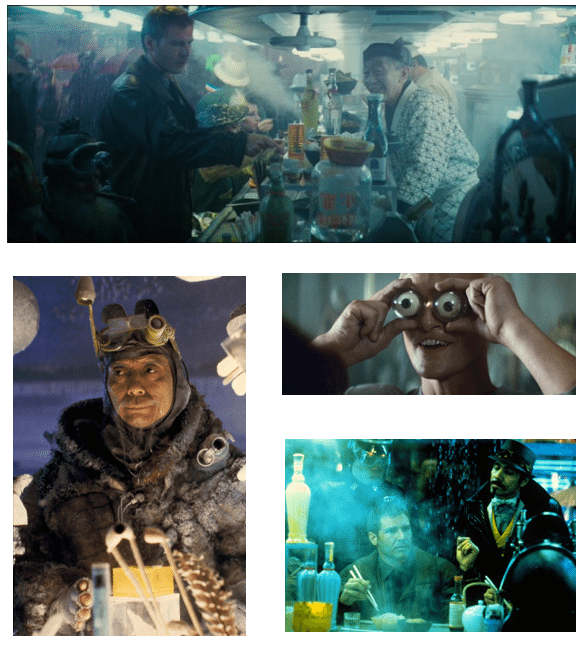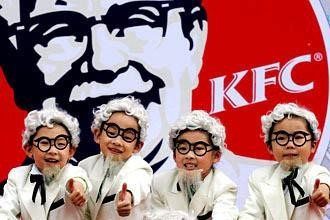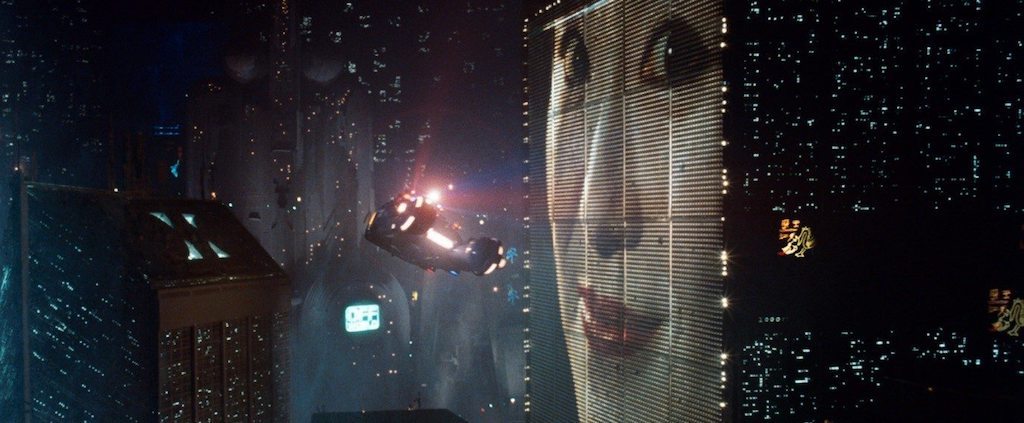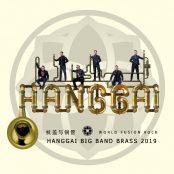[dropcap style=”font-size:100px;color:#992211;”]A[/dropcap]merica has certainly used globalisation to further its post war ambitions and to secure and grow its own power in the world.
Despite being the world’s richest and most powerful nation the fear of its own drive for globalisation and its own enthusiasm for free market economies is worried away at by its own soft power machine, Hollywood. The popularity and longevity of these dystopic visions exposes a fear that America may be pursuing its own slow erosion by the east and that other cultures may overtake it as the world’s powerhouse.
Blade Runner 1982
The striking background of Blade Runner 1982 is one of the most important elements of the film, its a postmodern mix of cultures and references. At once alien and exotic and of course unsettling. The remains of a modernist American power is swamped by consumer products and foreign languages blending to form the famous street language of the waifs and strays that Deckard passes on his existential journey, this was also a technique used by Anthony Burgess in ‘A Clockwork Orange’ although the ‘other’ then was the Soviet Union.
Asia is a word which conflates, well Asia!
The most notable influence intruding into familiar art deco and phallic skyscrapers of Los Angeles in Blade Runner is from Asia, and while this does not strike one as racist it does pin point a theme which plays well into western paranoia about losing hegemony over the masses,
“Among the aspects of the debasement of society, with the continual rain falling on Los Angeles, was the Asian influence over the decaying sprawl. The giant hypnotic billboard with the Japanese woman was only the most obvious representation of this takeover, above the faceless crowd scurrying across the street, speaking an urban argot (apparently more Eastern European, specifically Hungarian, than anything else). As in the antebellum South, the goal of those who escape is to travel North. But the overarching message is that Asia is anathema,” Frank H. Wu, ‘In the New Blade Runner, Asians Are Not the Corrupting Force,’ 2017, Huffington Post

Screen shot from the opening of Blade Runner 1982
Yellow Peril :0
Journalist Frank Wu is more critical (although he admits he loves the film) he links this with a ‘yellow peril’ reaction, he sees this as having a historic president ‘from Fu Manchu’ to resentment about Japan’s post war success and of course the rise of China as ‘hegemon.’
Wu’s argument is persuasive and he brings in other examples which follow the logic he’s revealing, for Wu Asia represents not only something ‘other’ but a kind of redundancy for western culture. Its certainly true that while the world brought to life in Blade Runner is thrilling its homogenisation of cultures is a nightmare for a nationalist or conservative, what’s interesting is how this redundancy is linked to big corporations and how they seem to be conflated with Asian characteristics (Perhaps it’s hard for a culture with so much money to simply recognise the downside of capitalism, Asia personifies this and stands between westerners and that fact?)
Wu sees this as a kind of trope that Asians are well behaved, do their jobs well and are therefore more efficient in the imagined corporate kingdoms of the future.

The East features heavily in this classic dystopia.
“The very concepts of homogenous national cultures, the consensual or contiguous transmission of historical traditions, or ‘organic’ ethnic communities – as the grounds of cultural comparativism – are in a profound process of redefinition,” Homi Bhabha, “The Location of Culture” 1994, Psychology Press.
As the quote above shows it’s a feature of post-modernism and a well documented fact that many of the norms we have depended on to form our national and personal identities are currently in flux. This is still true now in a world which is both becoming more and more interlinked and schizophrenically retreating into nostalgia and nationalism (think Tump and Brexit)
A Fading Power (America) in its own collective unconscious!
Like Wu many think the film is wonderfully made, the dystopia is both a thrilling backdrop to the action and is so meticulously rendered that you are pulled into the alternate LA. The notion that in any future blend of cultures Asian flavours would come through a little stronger is also a potent message, and the fear of that may be a racist and nostalgic reaction or simply a way to describe and exaggerate from the perspective of the 1980s a postmodern future where Americans have lost their swagger and their mantle.
Wu does concede that his fears of ‘Yellow Peril’ being a feature of new instalment didn’t come true and he felt the Director moved onto more universal themes relating to slavery.

The set of Blade Runner 1982 clearly showing a heavy influence from Asian city scenes
Tom Engelhardt writing also in the Huffington Post gives some historic backgrounding to this phobia which sees future cities as Asian influenced spaces,
“America’s dystopian Asian wars of the past, present, and possibly future. They undoubtedly deserve their own grim set of novels, starting with the bloody and brutal American conquest of the Philippines…the Pacific War against Japan that ended when a new weapon of unimaginable power obliterated two Japanese cities and significant parts of their populations…Vietnam War that left millions of Vietnamese, Laotians, and Cambodians (and 58,000 Americans) dead; a quarter century of Afghan Wars (the second of them now the longest in American history); and last but hardly least, the Korean War, which began in June 1950 and halted in 1953, after millions of Koreans (and 36,000 Americans) had died,” Tom Engelhardt, ‘America’s Dystopian Asian Wars’ 2017, Huffinton Post.
Who Is Better at Monopoly?
The paranoia that America might lose its own game to the East (that is the game of generating money) is a powerful source of fear for some westerners who know that much of the hold the western, specifically English speaking world has over global culture is largely guaranteed by American power.
Englehrdt also draws our attention to the fact that eastern peoples have been wronged and mishandled citing later Trumps fire and brimstone rhetoric as well as historic examples, so a feeling of national collective guilt may also feed the dystopia’s which Hollywood produces.
Cloud Atlas 2012
Regarding Wu’s distaste for ‘Yellow Peril’ perhaps a better example would be ‘Cloud Atlas’ a flawed but still worthy film which never the less displays both ‘Yellow Peril’ and perhaps more notoriously and worryingly ‘Yellow Face’ to make its points. While there is some pragmatism in the use of yellow face (we are supposed to be able to follow characters through time as they are reincarnated as other people)

Hugo Weaving & Jim Sturgess in Cloud Atlas 2012
there is strong sense that someone should have found a better way to do this, and that after all is said, if someone is Asian in a book or play then an Asian really should play them in the film.
The film does star Bae Doo-na a South Korean actress in a sympathetic role (she also has to white-up in another period of the film) but the controversy of the yellow face haunts the films legacy and Asian actors have every right to be irritated when white actors take parts ideal for them.
Cloud Atlas does follow the dystopic formula ‘New Seoul’ is a depressing vision of a totalitarian corporate controlled environment where identical looking woman are used and abused by the population, the city is reminiscent of Blade Runner although there are less references to grit and grime and more to a kind of superficiality and apathetic population.

Screen shot from Cloud Atlas where slave like test tube girls are used by the population as a slave like workforce.
“In culture and the arts, interpreters of this era describe the kinds of cultural hybrids that emerge from mixing (or rendering inoperative) the categories of “high” and “low” cultures, and hybrids in cultural forms that have developed in regions where local identities seek definition against, or in dialog with, Western “hegemonic” cultures (the mixing of “official” cultures and those defined as “other” in modernist ideologies,” Martin Irvine, ‘Communication, Culture & Technology Program’ 2013, faculty.georgetown.edu
Postmodern Aesthetics
There is a definite ‘post-modern’ fashion or aesthetic at work in this kind of film which owes a lot in general to 1980s design where the post-modern was so important in the arts. There is also evidence that collectively through Hollywood the west loves to worry about the loss of its supposed authentic identity and the dilution of that identity through exposure to Asian cultural factors, a sign that at one level visions of Chimerica are already realised.
Perhaps the prospect also worries Asian communities who lament the intrusion of American products and habits into their world in many cases as Tom Engelhardt historic perspective shows they didn’t have a choice the intrusion came anyway. In the case of consumer products China has embraced some aspects although since the time of Hu Jintao there has been a push back against this trend,
“From clothes to coffee, to food and movies, Western culture is big and getting bigger in China. For example, KFC is the country’s most popular restaurant chain and Buick is the top-selling car. However, the Chinese government is now pushing back on this influence. President Hu Jintao said China’s culture is being infiltrated by hostile Western forces,” PBS News hour weekly 2012
Checking Western Power
This has continued as a priority into the leadership of president Xi who has also sensed that the popularity of western culture needs limits to keep China’s priorities correct,
“In case Xi’s speech left any doubt as to the meeting’s purpose, China’s education minister explained it in an article the following day. “Schools,” he wrote, “are the prime targets for the infiltration of hostile forces,” Eric Fish, ‘Why’s Beijing So Worried About Western Values Infecting China’s Youth?’ 2017 China File.
Fish goes on to say this not a simple act of paranoia but the result of the authorities research into the collapse of other powers such as the Soviet Union, a range of stifling strategies including censorship and limits of air time are all used to curtail the intrusion.
China worries too! about western infiltration
The recourse to nostalgia and nationalism is common in both the west and the east. In Americas case the tension is in part due to the fact that America its self has created the opportunities both on purpose and by mistake that countries like Japan, Singapore, South Korea and now China have benefited from. Playing Americas game according to the rules invented by the west and prospering in a way which undermines a western feeling of superiority.
Psychologically the popularity of these films in the west and the east is a sign that America is intertwined not just economically but also psychologically with China and Asia in general.

The government in China wants more children to eat traditional Chinese food
_______________________________________________________
Related Trebuchet article ‘Chimerica’
Related Trebuchet article ‘Ghost Cities’

Natalie Andrews is an artist working with a range of mediums, she has shown her work at the Hoxton Arches in London and is currently working on a number of 3d works alongside painting exploring the links between painting and sculpture;
“I am interested in the way that we relate to one another and with space, how the environments we inhabit structure and dictate these relationships and create both opportunities for emancipation but also the deep alienation and separateness.”






















